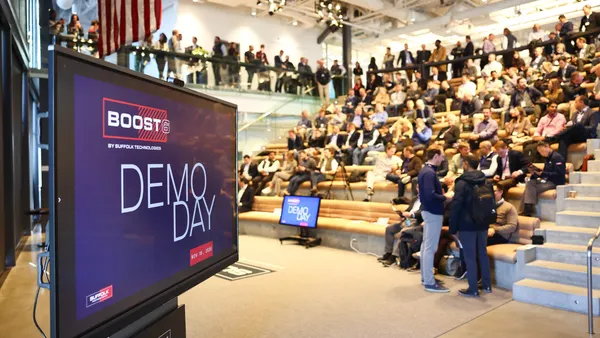Dive Brief:
- Building material startup BioMason has developed a method to "grow" bricks by injecting microorganisms into sand, initiating a four-day process similar to the one that creates coral, Inc.com reported. BioMason says the bricks' "biological cement" makes them strong enough to use in houses, commercial buildings and other structures.
- Co-founder and BioMason CEO Ginger Krieg Dosier came up with the idea for the environmentally friendly brick by combining a research assignment on green building materials with a love for coral.
- BioMason, which should start selling to consumers by 2017, recently received a $1.5 million investment from Acorn Innovestments as part of a $3 million fund-raising round, in addition to $2.8 million raised through seed funding, grants and awards in 2013, Inc.com reported. Sustainable building materials, according to market researcher IBISWorld, are a $36.1 billion industry and that number is expected to grow by 10.6% annually until 2020.
Dive Insight:
According to estimates from Dosier and the EPA, brick manufacturing accounts for approximately 8% of all global carbon emissions, Inc.com reported, and, as world pressure increased to come up with more sustainable options, the opportunity for products like Dosier's grows.
Dosier joins the ranks of innovators who are researching high-performing alternatives to traditional concrete and masonry.
Scientists at the Swiss Federal Laboratories for Materials Science and Technology say they’ve developed a process, using a super absorbing polymer mixed with self-impacting concrete, which makes the resulting material heat resistant up to temperatures of at least 1,852 degrees Fahrenheit.
Researchers at Cardiff University in Wales have been also been testing a new-and-improved concrete, one they say is self-healing, and scientists at Northwestern University in Illinois have developed a "Martian concrete" product, which they say could one day be used to build habitable structures on the surface of Mars. The "concrete" is made of a 50-50 mix of Martian soil and molten sulphur.
In addition, a team at the Self-Assembly Lab at MIT and Gramazio Kohler Research has invented what they call "reversible concrete,” made using only a 3-D printer, rocks and string.
And perhaps the most popular concrete variation, featured in a 2015 viral video, is Lafarge Tarmac's Topmix Permeable concrete, which can "drink" more than 1,000 gallons of water in a minute.













